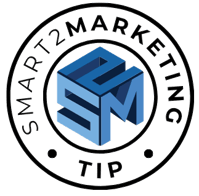Uncover Your Real SEO Performance and Find Opportunities with Google Search Console
This blog post is for marketers who work for companies that have technical products for technical buyers. For instance, you might need to reach engineers, product designers, or manufacturing specialists.
Your job is hard.
 If you’re a marketing manager at a company that manufactures complex products, chances are your buyers are engineers, technical directors, or operations leads.
If you’re a marketing manager at a company that manufactures complex products, chances are your buyers are engineers, technical directors, or operations leads.
You, of course, rely on SEO for prospects to find you. But how do you know which search terms are working and which ones are not?
Your website must show up in searches for the right terms—terms your audience actually use.
These people are often searching for ways to solve problems. Part of your marketing strategy should be developing content that these people in your Buyer's Journey are looking for.
Is that content successful? Is it bringing people to your site? What terms are doing great, and which ones could use improvement?
That’s where Google Search Console comes in.
At Smart2Market, we work with marketing teams in highly technical industries every day, and this is one of our go-to tools for uncovering opportunities, validating SEO strategies, and eliminating blind spots.
Here’s how you can use Google Search Console to see what you’re ranking for—and how to use that insight to sharpen your content strategy.
Step 1: Access the Performance Report
Once you’ve verified your website with Google Search Console, head to the “Performance” tab. This is where the magic begins.
You’ll see a dashboard showing:
- Total clicks
- Total impressions
- Average click-through rate (CTR)
- Average position
But the gold is in the “Queries” section—this tells you the exact search terms (aka keywords) people typed into Google that resulted in your pages showing up.
Step 2: Sort and Filter for Relevance
Start by filtering out branded terms—your company name, product names, etc. Those are expected. What you're looking for are non-branded keywords related to your industry, solutions, or customer pain points.
For example:
- “design for manufacturability for medical devices”
- “multi-CAD integration for heavy equipment”
- “how to reduce BOM errors in SOLIDWORKS”
If these types of terms show up—great. If not, you’ve got a visibility gap.
Step 3: Find the Underperformers
Sort the table by Impressions and look for search terms where:
- Your position is 6–20 (page 1 or 2 of search results)
- You have few or no clicks
These are prime opportunities. You’re showing up, but not getting traffic. That might mean your metadata (title tag/meta description) isn’t compelling, or your page content isn’t aligned with the intent of the query.
Pro tip: Combine this with a content audit. Is the page technically rich? Does it answer the question the searcher is asking? If not—optimize.
Step 4: Build Content Around What’s Working
On the flip side, find the keywords where you're already ranking well—top 5 positions—and getting clicks. These are your SEO wins. Lean into them.
- Build related content clusters around those keywords.
- Link internally from new posts to the high-performing page.
- Add long-tail variations to expand reach.
This strategy works particularly well in technical markets, where authority and specificity win over buzzwords.
Why This Matters for Complex Product Manufacturers
Unlike B2C or even general B2B, technical buyers use very specific language—often filled with jargon or acronyms. They’re not searching for “solutions” or “transformation.” They're searching for “geometric dimensioning and tolerancing in CAD” or “48V power management for ADAS.”
If your site isn’t ranking for these terms—or if you don’t even know what terms you’re ranking for—you’re missing out on qualified, bottom-of-funnel traffic.
Final Thoughts from Smart2Market
At Smart2Market, our mantra is KNOW – REACH – MOTIVATE. Google Search Console helps you KNOW what your audience is searching for and learn how to REACH them more effectively. When your content aligns with those search terms, you're far more likely to MOTIVATE action—whether it's a form fill, a demo request, or a whitepaper download.
Need help turning these insights into a marketing strategy that speaks the language of your buyers? That’s what we do.
Let’s talk.